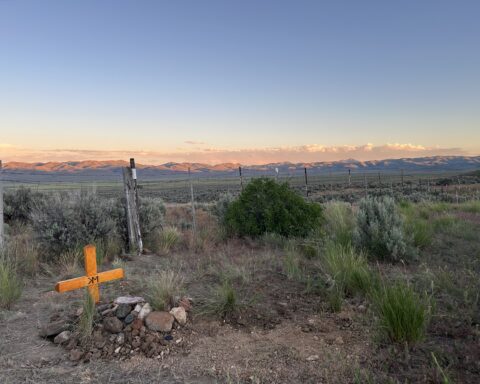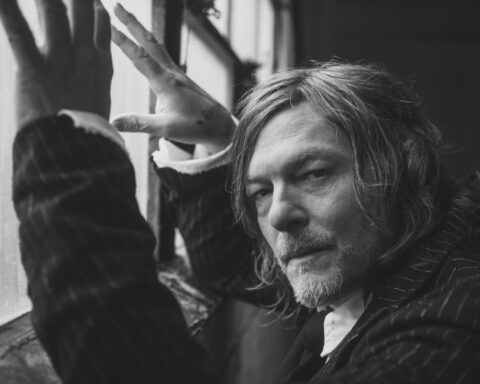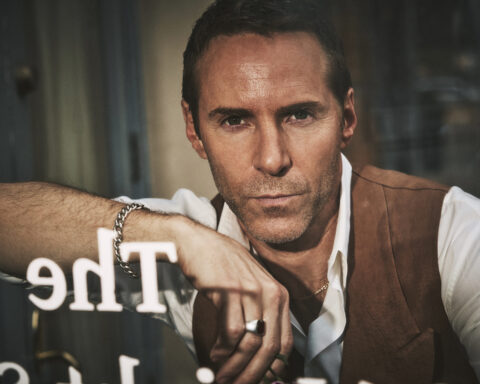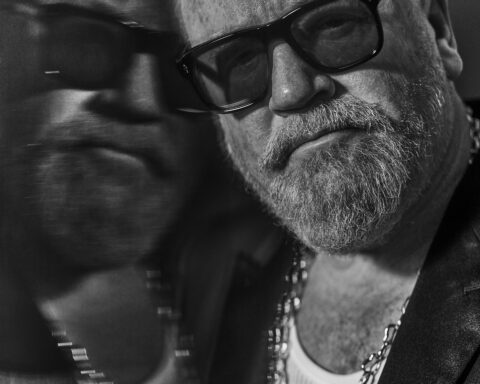Life is cyclical. We are born innocent and vulnerable, we get on with the adventure of life, enjoy the highs, confront the slings and arrows, before reverting back to where we began. If we are fortunate, we are clear in our understanding of time and our need to find purpose doing what we love.
David van Eyssen has come full circle and is now, following a tumultuous episode that almost cost him his life, doing what he loves: making art. Remarkably, it was the hours spent in the MRI tunnel while battling cancer that inspired David to leave his role as a leading digital media creator, and return to being a full-time artist, using his MRIs and body scans within his work.
“This is my theory,” he says. “When you think you’re going to die, your brain and your body produce a new pattern of chemicals which sensitize you to the world in a way that you have been desensitized before.
“So you actually smell, taste, see and hear in an enhanced way. That’s what was happening to me. I was so acutely aware of my own mortality, that it sharpened everything. Cancer became the opportunity to examine my life in such detail that I had a second chance at life, not just in recovering from cancer, but a chance to think it all through again and to be, in a way, reborn.”

David van Eyssen // 📸: Lee Morgan
An Englishman born into a family of high creative pedigree, as a child David was surrounded by the movers and shakers of the film, theatre, art and literary world. A gifted painter, David was given his own show at esteemed London art school Goldsmiths when he was just 14. Remarkably, after the exhibition, his work was stolen and his teacher offered comfort telling him, “That’s a good sign, someone thought it was worth taking.”
Educated between the UK and California, and following a chance meeting with painter Francis Bacon, David was inspired to begin creating conceptual and installation art. Then, having been commissioned to produce a piece by Bobby Kotick, the founder of the video game manufacturer Activision, he embarked on a chapter where he formed his own video game company. This fed an ever-evolving interest in interactive storytelling, writing and producing digital content, all this at a time when the concept of streaming was still in its infancy.

Album art for music artist Hyfae (2021) by David van Eyssen
In 1997, David independently designed and shot an interactive sci-fi pilot called ‘The Passenger’ specifically for the internet. In those days, connection speeds meant that an episode would take about a week to download, but when he showed the project to a fledgling online video startup in Santa Monica, the stars aligned. He was hired to direct the startup’s promotional campaign, and help them fundraise using ‘The Passenger’ as proof of concept, and build Digital Entertainment Network, one of the first online entertainment streamers, which would later become a notorious example of internet excess.
On the strength of his work at DEN, David then became a partner and creative director at iBelieve Media, which were part of the team that shepherded the iconic BMW series starring Clive Owen. Thereafter, having developed several digital pilots, Paramount Pictures gave David a deal to write, direct and produce digital series. David was swiftly becoming one of the pioneers, leading the rush to write and produce quality episodic content for online streaming, and his efforts were validated with the success of RCVR, his 2011 transmedia sci-fi series which was the benchmark for original cinematic storytelling on the internet at that time.

David van Eyssen // 📸: Lee Morgan
All seemed to be going swimmingly, his creative career following a very promising trajectory, when in 2014 a visiting friend noticed a mole on his back and persuaded him to have it examined. His diagnosis was Stage 4 melanoma that had already metastasized. David was given a prognosis of about two years. Following surgery in LA which didn’t remove the entirety of the cancer, a family friend recommended a team of doctors at MD Anderson Cancer Center in Houston, Texas, and with nothing to lose, David began a bespoke treatment plan that comprised targeted chemotherapy working in tandem with an innovative immunotherapy process that bolstered his own body’s immune system in fighting the cancerous cells. It took time, but by 2018, the treatment was a success. A year later, Jim Allison, the scientist behind the immunotherapy program for melanoma would go on to win the Nobel Prize for his contribution to cancer therapy, and MD Anderson’s melanoma department, led by Dr. Patrick Hwu, reported a jump in the survival rate from 5% to 50%.
During his time in the MRI tunnel, David began to have extremely vivid hallucinations which would go on to influence his art. And although naturally claustrophobic, he began to embrace the experience. “I started to listen to the sound of the MRI and began to enjoy it,” he says. “I called it the tunnel of love.”
“I was out of my body completely,” he explains. “I’d have these strange experiences where when they put me into the tube, I began to see things that I thought were planets being born and stars being destroyed…in such detail, I was no longer in my body, I was floating through the cosmos.”
He discussed his experiences with his doctor who suggested David was not seeing the universe but in fact visualizing the inside of his body, where the cancer cells were exploding and being replaced by new ones. This discussion led David to co-found a think tank called Lucid Science, alongside a group of Cedars Sinai doctors, to observe cancer and immune systems in virtual reality, developing diagnostic tools which utilized 3D mapping. And it also led to him reevaluating his own creative direction.
He says, “After the cancer, going back into the entertainment business held no allure for me. I was a painter before lapsing for 25 years to become a filmmaker. I had to rethink my life, and art started to come out of me.”
David drew from his experience of ‘chemo brain’ and the occasional memory gaps for his art, which combined his long-honed skills of photography, filmmaking and digital painting techniques for a series of works that explore time, place, memory and the relationship between nature and technology. LG has sponsored his work since 2019, and provide him with some of the tools of his trade including a range of high-resolution displays and projectors – primarily OLED screens which deliver excellent cinematic detail and contrast without distortion. He seduces the viewer into a fragmented world using 120 and more layers of still and moving images, interspersed with static appearing in the form of shapes, raindrops, and electrical distortions. He also uses his MRIs and body scans in his art and incorporates Super 8 footage he shot as a young boy.

After The Fall (We Stopped at Eden) (2021) by David van Eyssen
His pieces are intricately woven together, expertly engineered, crafted with the quality level of a dedicated artisan. They are dreamy, surreal, immersive and hauntingly beautiful – part reality, and part possibility. And not all his work uses hi-tech equipment, his fascination with fragmentation currently being expressed in an almost analogue form, with his latest series working with mirrors creating an erosive yet touching experience.
His work is in major private collections in the US and Europe and he’s in discussions to install a large scale video sculpture in LA, and has plans to exhibit expansive lenticular, photographic, and video works in galleries and public spaces later this year.
“All my work is based on time and memory,” he explains. “I was running out of time and getting back my memory. I focus on the way we see things, the way we piece things together. Then I discovered that my work wasn’t about the past, it was about the present.”

David van Eyssen // 📸: Lee Morgan
For more information check out David’s website








